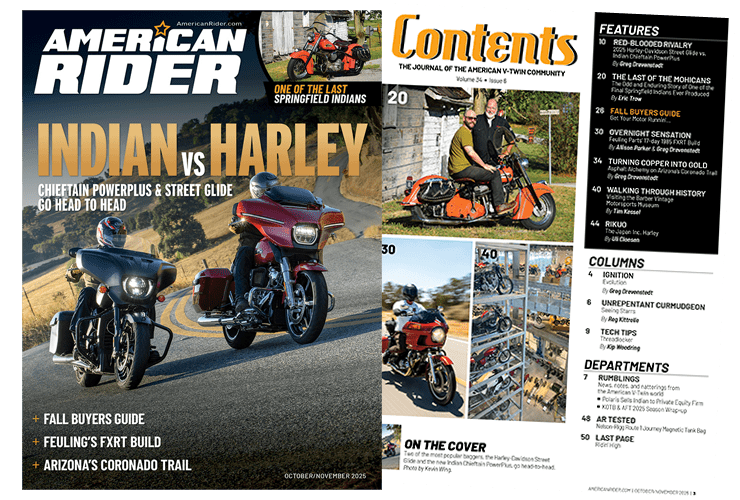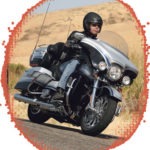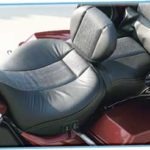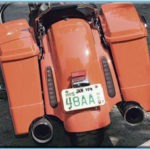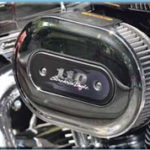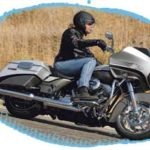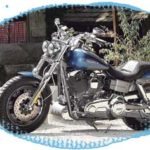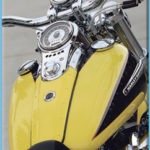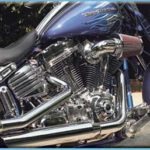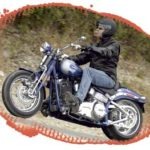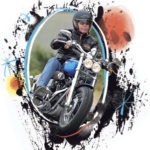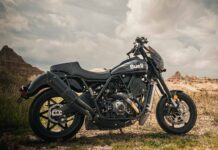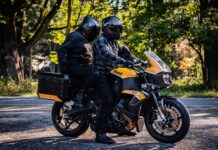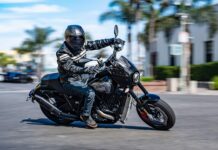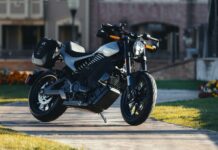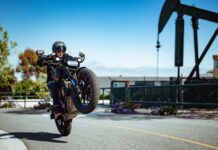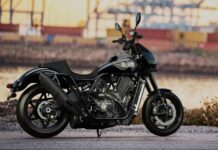A look through Milwaukee’s top drawer
The bird is back and the Fat Bob gets CVO’d
Santa Barbara, Calif., June 25—Before we get started in earnest with this report we need to set the record straight on something, and that’s the fact that this year’s lineup of big-inch, über- accessorized Technicolored dream machines from the Custom Vehicles Operations splinter group of Harley-Davidson are no longer referred to officially as “Screamin’ Eagles.” That long-standing nomenclature has been superceded by a new nomenclature, one that sounds trendily like a hip-hop collaboration, i.e. “CVO featuring Screamin’ Eagle.” Furthermore, the traditional Milwaukee alphabet soup designations of the new models are being relegated to mere footnote status, and the numeric superscripts that have distinguished iterations of various models over the years have been eliminated entirely. What does this mean to you? Not much, really. But what it means to me is a whole lot less typing, especially when you combine those things with the breezy new attitude the CVO guys have towards their model names. Where last year I was obliged to type “2008 FLHTCUSE3 Screamin’ Eagle Ultra Classic Electra Glide,” this year it’s perfectly acceptable for me to describe that model’s successor as simply “2009 CVO Ultra.”
This is already proving a real labor-saver, and the simplification of all things CVO goes on from there in that the division has matured to the point where they essentially have an established core of models consisting invariably of one specimen each from the Dyna and Softail platforms and two from the Tourers, and for 2009 those specimens are the CVO Fat Bob, CVO Springer, CVO Road Glide and CVO Ultra. (With the time I saved in typing that sentence alone, I could take up golf.)
While the model lineup is thus pretty much standardized, the engineers in charge of creating them are more flexible, such that the first bike we’ll consider, the CVO Fat Bob, was developed by a team led by Jeff Smith, who last year was responsible for the design of the FLSTSSE2 Screamin’ Eagle Softail Springer (doh!). This bike is described by Smith as, “where beauty meets the beast,” and what he means is that it represents a mighty dressing up of the bare-knuckled FXDF Dyna Fat Boy that was introduced just last year, and one that brings a whole host of innovative finish treatments into play. For starters, the CVO Fat Bob’s seat is a handsome patchwork of Alantra—a rugged and convincing faux suede material—with genuine leather. Then there’s the unique Fang Cast Wheels that seamlessly wed a slotted black powder-coated disc with a bright chrome rim flange and finish the look off with the “fangs”—chrome doodads affixed at intervals around the edge. It’s a striking combo, but one you have to scrutinize to fully appreciate owing to the broad powder-coated floating brake rotors that are gorgeous in their own utilitarian right, but tend to obscure the view. Much easier to appreciate—and impossible to ignore—is the bike’s elaborate tank console, a two-tone affair of color-matched powder coating and blinding chrome that easily qualifies as the most stunning console to come out of Milwaukee to date.
Other readily apparent innovations on the model are the addition of a blunt chin spoiler, a Heavy Breather intake system, and black powder-coated headpipes peaking through the slots of the Fat Bob’s signature Tommy Gun exhaust shields.
As a practical matter, the CVO Fat Bob departs most dramatically from the stocker in its suspension setup, with the front end being slammed by three-quarters of an inch, and the rear shocks being retuned for a cushier ride. Together these tweaks result in what Smith calls, “pro-street performance with rider comfort.”
There are three paint schemes offered on the CVO Fat Bob, and I’d like to comment at this point that the only thing more ostentatious than a CVO paint job is the verbiage used to describe it; thus we have Sunrise Yellow Pearl with Platinum Quartz, Black Diamond with Fire Quartz, and—my personal favorite—Denim Granite with Electric Blue Fade. That last one is the real knockout of the bunch, pairing a matte finish with a gloss finish to striking effect.
The list on the CVO Fat Bob is $25,299, and production is limited to 2,450 units.
Springing back
Appearing on behalf of the Softail platform for 2009, and returning for its third consecutive CVO appearance, is the CVO Springer, and you have to wonder if the other models in the Softail stable aren’t beginning to grumble—especially the FXCW Rocker. (“How come the Fat Bob got CVO’d and I didn’t? What am I? Chopped liver?) The Rocker got involved in the project though, by first contributing its 240mm rear tire to the cause. To accept that rubber the CVO Springer got a whole new rear end assembly including a chrome-plated swingarm, fat louvered fender and dashing new struts. As part of that renovation, the bike also received a new seat pan layered with an improved composition foam that create a truly commodious rider pocket. Complementing that ergonomic realignment are the redesigned handlebars that put the rider in what Softail Team Manager Greg
Faulkner calls “a real control position.” (Faulkner was responsible for last year’s FXDSE2 Screamin’ Eagle Dyna.)
Elsewhere on the CVO Springer we find another contribution from the Rocker, this one the grooved horseshoe oil bag. It’s been chromed for CVO Springer use and matched with a grooved chrome tank console. The Heavy Breather intake returns from last year’s Springer model, and new for this year is a four-piston front brake caliper—the first such unit to appear in a Springer application.
Mouthwatering color schemes on the CVO Springer include Candy Cobalt with Blue Steel Flames, Black Diamond with Emerald Ice Flames, and Sunrise Yellow Pearl with Volcanic Fury Flames—yum. There will be 2,500 units available at $26,999 a pop.
Doubling down
For the second straight year the custom details of the CVO Tourer models are overshadowed by the news they bring of developments in the broader Harley-Davidson Tourer platform. Last year we saw the models herald the platform-wide introduction of ABS, electronic throttle controls, Brembo brakes and six-gallon tanks, changes that redefined the machines so convincingly that nothing short of a full chassis redesign could possibly upstage the act. And that’s just what Milwaukee’s done for 2009.
Robotically welded throughout, and consisting of two main members bolted together, the new frame is a rock-solid configuration and a rock-steady one as well, boasting redesigned motor mounts to reduce vibration at an idle, and evidencing none whatsoever under power. Coupled with a new lengthened swingarm, the chassis has a wheelbase a half-inch longer than its predecessor, and that additional stretch provides for more passenger legroom between the footboards and saddlebags. The swingarm has also been widened to accommodate a 180mm tire for 2009, and the tire being put into service is described as “dual compound”—it uses a high-mileage compound in the center of the tread and softer stuff out on the edges for stickier cornering. The support brackets for both the saddlebags and Tour-Pak have been beefed up to permit greater payloads, and the suspension’s been retuned for more compliant handling. There are a number of other refinements, including things like shorter whip antennae, reengineered rear-drive compensator, revised pulley ratio, and—I couldn’t help but notice—a sidestand that deploys and retracts with uncharacteristic sureness. But the most significant improvement of all is the exhaust system. No longer do the pipes cross over at the rear cylinder manifold where, as we all know, they did a bang-up job of building up and radiating massive amounts of heat right under the operator and passenger legs. The crossover is now located down at the lower frame rail, away from the riders, and what’s more, the rear header now curves forward of the transmission, further isolating heat from the passenger’s leg. In appearance it’s a drastic break with H-D bagger tradition, but looks real sweet nonetheless and produces a rattlingly resonant exhaust note.
On that foundation, CVO built their two 2009 Tourer models, and we’ll examine the CVO Ultra first, as an age-before-beauty courtesy. The CVO Ultra has plenty of beauty, to be sure, but boy does it have tenure—at least in CVO years. It has become the perennial CVO machine—four years in a row and counting, and that on top of two years of SE Electra Glides that were basically Ultras without Tour-Paks—and it’s also far and away the most expensive model at $35,499 and far and away the most numerous with 4,200 units slated for production for 2009. “Back by popular demand,” is how returning Team Manager Randy Riley introduced the bike, and that’s something of an understatement when you consider that H-D sells more of these bikes and at a higher price than the current combined output of the production custom companies in the country.
You don’t mess with success—much, anyway—and thus, aside from the whole revolutionary chassis redesign thing, the 2009 CVO Ultra doesn’t bring a whole lot more than cosmetic refinements to the dance for 2009. Among those cosmetics are the Roulette Wheels, Rumble Collection of controls and hardware, braided steel clutch and cable lines, and illuminated Air Wing Tour Pack luggage rack straight out of the P&A catalogue. The only area in which the bike stakes any innovational cred is the seat, which is designed, Riley tells us, like an ergonomic chair. The top layer is suspended above the lower cushioning in hammock fashion, and designed so for serious long-distance comfort. It’s also heated, and has shark-print leather inserts and matching backrests.
The model does, however, have some truly tasty color schemes for dessert, being offered in Autumn Haze and High Octane Orange, Stardust Silver and Twilight Blue, and Ruby Red and Typhoon Maroon—all with Forge-Tone Graphics.
Screamin’ dreadnaught
As some astute readers will doubtless point out, there are theoretically two ways to measure age in CVO years, and if you want to get fussy about things you could make the case that the CVO Road Glide trumps the CVO Ultra, having first appeared in custom trim as the fabled Screamin’ Chicken of 2000. That model, with its swoopy eagle head graphic scheme and monstrous-at-the-time 95-inch Twin Cam, was the first true break from stock machinery that the then-recently instituted Custom Vehicle Operations cabal executed. It spawned clubs of owners and admirers and drew the unalloyed scorn of traditionalists. The 2009 iteration of the beast is unlikely to achieve the same level of polarization—mostly because the traditionalists are something of a desensitized breed these days—but it’s no less of a breakthrough for the CVO renegades than the original.
Phil Zagrodnik, who brought us last year’s FLHRSE3 Screamin’ Eagle Road King, was the team manager on this one, and it’s obvious that his operation has been paying close attention to the custom bagger phenomenon of recent times. What they’ve learned and applied is that saddlebags should droop down over the exhaust, windscreens should be virtually nonexistent and seats should be sculpted skinny like pro-street pads. They’ve also slammed the front end of the bike by using the suspension of the FLHX Street Glide and dropping the fender down a full 0.75 inches, and they’ve fitted 18″ wheels front and back. Cleaning up the prow of the Road Glide fairing, the protective shield of the headlights has been jettisoned and replaced by trimmed-out lamps with hardened lenses. A new cutaway candy dish air cleaner is fitted as well, which combined with the new exhaust architecture of the Tourers give the bike a serious street rod élan.
And that ain’t the half of it. The most haute-custom and head-turning feature of the bike is the thoroughly reworked rear end where filler panels between the superlow fender and superlow saddlebag skirts have been fitted with frenched-in LED light strips, eliminating entirely the conventional taillight and turn indicator bar. It’s as seamless and sanitary a setup as any one-off custom bagger around—except for the license plate lamp and reflector, which look out of place, but the DOT demands it.
They’ve done all of those things while still paying unblushing homage to the original CVO Road Glide by resurrecting, in understated fashion, the eagle head graphic. That’s an homage that many speculated would come in 2010 on the 10th anniversary of the original, but not surprisingly, the CVO iconoclasts are apparently not a sentimental bunch and felt it was high time to troop out the iconic bird again. They’ll be producing 3,000 copies of the bike at a list price of $30,999.

